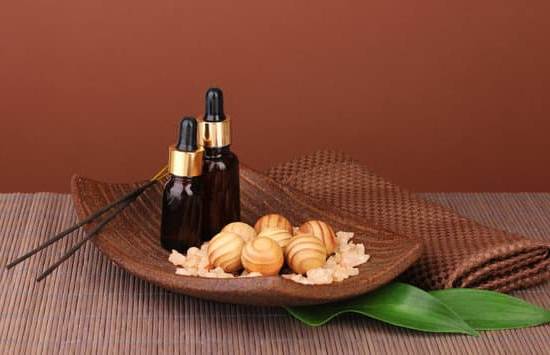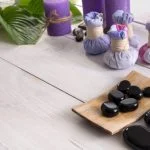Aromatherapy color changing adds a unique twist to the traditional practice of aromatherapy, combining the therapeutic benefits of essential oils with the mood-enhancing effects of colors. Aromatherapy itself has long been known for its ability to promote relaxation and alleviate stress through the use of natural plant extracts. By incorporating color changing elements into this practice, individuals can further enhance their sensory experience and emotional well-being.
The history of aromatherapy dates back centuries, with cultures around the world recognizing the healing properties of aromatic plants. Over time, the practice has evolved and gained popularity as a holistic approach to maintaining mental and physical health. The concept of using specific colors to influence mood and emotions also has roots in ancient civilizations, where color therapy was believed to have spiritual and healing powers.
Understanding the science behind color changing can shed light on how it can amplify the benefits of aromatherapy. Different colors are known to evoke distinct feelings and reactions in individuals, such as blue for calmness or yellow for happiness. By linking these color associations with specific essential oils during aromatherapy sessions, individuals can create a harmonious environment that promotes relaxation, reduces stress, and uplifts their spirits.
History of Aromatherapy
Aromatherapy has a rich history that dates back thousands of years, with roots in ancient civilizations such as Egypt, China, and India. The practice of using aromatic oils for medicinal and therapeutic purposes has evolved over time, incorporating different techniques and ideologies from various cultures. In ancient Egypt, essential oils were used in religious rituals, cosmetics, and embalming practices. The Egyptians believed in the healing properties of oils extracted from plants like frankincense and myrrh.
The term “aromatherapy” was coined by a French chemist and perfumer named René-Maurice Gattefossé in the early 20th century. Gattefossé discovered the healing properties of lavender oil when he accidentally used it to treat a burn on his hand.
His findings sparked interest in the scientific community about the benefits of essential oils for health and well-being. Aromatherapy gained popularity in Europe during the early 20th century but has since spread worldwide as more people seek natural alternatives for relaxation and stress relief.
Over the years, aromatherapy has been studied extensively for its therapeutic effects on both physical and mental health. Research shows that certain scents can have a profound impact on mood, emotions, and cognitive function.
When combined with color changing techniques, aromatherapy can create a multi-sensory experience that enhances relaxation and promotes overall well-being. By understanding the history of aromatherapy and its evolution, we can appreciate how this ancient practice continues to be relevant in modern times for holistic healing.
| Aromatherapy History Fact | Impact |
|---|---|
| Ancient Egyptians used aromatic oils in religious ceremonies | Established early use of aromatics for spiritual purposes |
| Rene-Maurice Gattefossé coined the term “aromatherapy” | Introduced aromatherapy as a modern practice with scientific basis |
| Aromatherapy combined with color changing creates a holistic sensory experience | Enhances relaxation through multiple senses simultaneously |
The Science Behind Color Changing
Aromatherapy color-changing is an innovative approach that combines the benefits of aromatherapy with the psychological effects of different colors. The concept revolves around using specific colors to create a soothing and calming environment, while simultaneously enjoying the therapeutic properties of essential oils. Each color has its own unique impact on mood and emotions, making it a powerful tool for enhancing the overall experience of aromatherapy.
Colors have been studied for their psychological effects for years, with research showing that they can influence our mood, behavior, and even physical health. For example, blue is often associated with calmness and tranquility, making it ideal for relaxation and stress relief.
On the other hand, yellow is known to evoke feelings of happiness and positivity, which can help elevate mood and energy levels. By understanding the science behind color changing and its impact on emotions, we can better appreciate how it complements the benefits of aromatherapy.
When it comes to aromatherapy color-changing products, such as diffusers or lamps, the combination of soothing scents and calming colors can create a multi-sensory experience that promotes overall well-being. For instance, using lavender essential oil in a diffuser with soft purple lighting not only enhances relaxation but also helps in inducing sleep.
Similarly, pairing citrus oils with warm orange hues can boost mood and invigorate the senses. Ultimately, harnessing the power of specific colors alongside aromatherapy oils can offer a holistic approach to emotional balance and mental wellness.
| Aromatherapy Color-Changing Benefits | Impact on Emotions |
|---|---|
| Enhances relaxation | Creates a soothing atmosphere |
| Promotes stress relief | Elevates mood levels |
| Induces sleep | Boosts energy levels |
Benefits of Aromatherapy Color Changing
Aromatherapy color changing is a unique practice that combines the benefits of aromatherapy with the mood-enhancing properties of different colors. By incorporating color-changing elements into your aromatherapy routine, you can further elevate the therapeutic effects and create a more immersive sensory experience. The synergy between aromatherapy and color therapy can help enhance relaxation, reduce stress, and promote overall well-being.
There are several ways in which the combination of aromatherapy and color changing can be beneficial. Here are some key advantages:
- Enhanced Mood Regulation: Certain colors have been shown to have a direct impact on mood and emotions. By pairing specific essential oils with corresponding colors, you can create a harmonious environment that promotes feelings of calmness, positivity, or rejuvenation.
- Increased Relaxation: The soothing effects of aromatherapy oils combined with calming colors can help induce a state of deep relaxation. This can be particularly beneficial for those looking to unwind after a long day or alleviate stress and anxiety.
- Heightened Sensory Experience: Aromatherapy color changing engages multiple senses at once, creating a multi-dimensional experience that can enhance the overall effectiveness of both practices. This holistic approach to wellness can lead to a deeper sense of relaxation and overall well-being.
By incorporating aromatherapy color changing into your daily routine, you can take advantage of this powerful combination to improve your mental and emotional health. Whether through the use of color-changing diffusers, lamps, or candles paired with your favorite essential oils, you have the opportunity to create a personalized sensory experience that suits your unique needs and preferences. Explore the world of aromatherapy color changing and discover how this innovative practice can transform your well-being.
Popular Aromatherapy Oils
Aromatherapy is the art of using essential oils extracted from plants to promote overall well-being and relaxation. These oils are often used in combination with different methods to create a calming atmosphere and alleviate stress. When paired with color-changing elements, such as lighting or diffusers, the effects of aromatherapy can be enhanced even further. The synergy of aromatherapy and color changing can create a truly therapeutic environment that not only smells amazing but also visually enhances the mood.
Lavender Essential Oil
One of the most popular essential oils used in aromatherapy is lavender oil. Known for its calming properties, lavender oil is often used to reduce anxiety and improve sleep quality. When combined with color-changing elements, such as a diffuser that shifts between soothing hues like blue or purple, the relaxing effects of lavender oil can be amplified, creating a peaceful ambiance ideal for unwinding after a long day.
Peppermint Essential Oil
Peppermint oil is another commonly used essential oil in aromatherapy due to its invigorating and refreshing scent. This oil is known for its ability to promote alertness and clear the mind. When paired with color-changing devices that shift between bright colors like green or white, peppermint oil can help increase focus and concentration while creating a vibrant atmosphere that stimulates the senses.
Lemon Essential Oil
Lemon essential oil is often utilized in aromatherapy for its uplifting and energizing properties. The fresh citrus scent of lemon oil can help boost mood and reduce feelings of fatigue. By incorporating lemon essential oil with color-changing candles or lamps that switch between cheerful colors like yellow or orange, you can create an uplifting environment that promotes positivity and mental clarity.
Types of Color Changing Devices
Aromatherapy color changing devices have become increasingly popular as people seek innovative ways to enhance their relaxation and stress-relief routines. These devices combine the benefits of aromatherapy with the mood-enhancing effects of color therapy, creating a unique sensory experience that can uplift spirits and promote overall well-being. From diffusers to lamps and candles, there is a variety of options to choose from when it comes to incorporating color changing into your aromatherapy practice.
Color-Changing Diffusers
One of the most common types of color-changing devices used in aromatherapy are diffusers. These devices not only disperse essential oils into the air for inhalation but also emit soothing colored lights that can help create a calming ambiance. Color-changing diffusers often allow users to select their preferred color or cycle through a range of hues, giving them the flexibility to customize their experience based on their mood or needs at that moment.
Color-Changing Lamps
Color-changing lamps are another popular choice for those looking to incorporate aromatherapy and color therapy into their daily routines. These lamps emit soft, glowing light that shifts through different colors, creating a tranquil atmosphere that can promote relaxation and mindfulness. By pairing a color-changing lamp with your favorite essential oil blend, you can create a serene environment that engages multiple senses simultaneously, enhancing the overall therapeutic benefits.
Color-Changing Candles
For those who prefer a more traditional approach to aromatherapy, color-changing candles offer a cozy and inviting way to enjoy the benefits of both fragrance and light therapy. These candles often come in various scents that correspond with different colors, allowing users to tailor their experience based on their desired mood or outcome. The gentle flicker of candlelight combined with shifting hues can create an enchanting environment that promotes tranquility and emotional balance during aromatherapy sessions.
Incorporating these different types of color-changing devices into your aromatherapy practice can elevate your experience and help you achieve greater relaxation and stress relief. Whether you opt for a diffuser, lamp, or candle, adding this element of visual stimulation to your routine can enhance the therapeutic effects of essential oils and create a more immersive sensory experience.
Explore the range of options available and find the device that resonates most with you as you embark on your journey towards holistic well-being through aromatherapy color changing.
How to Use Aromatherapy Color Changing at Home
Aromatherapy color changing can be a wonderful addition to your daily routine, allowing you to experience the benefits of both aromatherapy and color therapy in one. Here is a step-by-step guide on how you can incorporate aromatherapy color changing into your home:
1. Choose Your Aromatherapy Color Changing Device: The first step is to select the right device for your needs, such as a color-changing diffuser, lamp, or candle. These products often come with instructions on how to use them effectively. Make sure to fill the diffuser with water and add a few drops of your favorite essential oil before turning it on.
2. Set the Mood with Colors: Different colors have different effects on our mood and emotions. For example, blue is known for its calming properties, while orange can bring warmth and energy. Set your color-changing device to a hue that complements the therapeutic benefits of the essential oil you are using.
3. Create a Relaxing Atmosphere: Find a quiet and comfortable space in your home where you can relax and unwind. Dim the lights and play some soothing music if desired. As the aromatherapy color changing device emits gentle scents and soothing colors, take deep breaths and allow yourself to fully immerse in the experience.
By incorporating aromatherapy color changing into your daily routine, you can create a calming and rejuvenating environment that promotes relaxation and overall well-being. Experiment with different essential oils and colors to find what works best for you, and enjoy the soothing effects of this holistic approach to self-care.
Aromatherapy Color Changing Tips and Tricks
In conclusion, incorporating aromatherapy color changing into your daily routine can significantly enhance the therapeutic effects of both aromatherapy and color therapy. The combination of soothing scents and calming colors creates a synergistic effect that promotes relaxation, reduces stress, and uplifts mood. By understanding the science behind how certain colors can impact emotions and mood, individuals can tailor their aromatherapy experience to better suit their needs.
When using aromatherapy color changing at home, it is important to choose high-quality essential oils known for their specific benefits, such as lavender for relaxation or peppermint for invigoration. Pairing these oils with a suitable color-changing device like diffusers or lamps can create a truly immersive experience. Additionally, creating a relaxing atmosphere by dimming lights, playing soft music, or practicing deep breathing techniques can further enhance the overall calming effect.
To maximize the benefits of aromatherapy color changing, consistency is key. Incorporating this practice into your daily routine can help establish a sense of calm and balance in your life.
Whether it’s starting your day with an energizing blend of citrus oils or winding down with soothing lavender in the evening, finding what works best for you is essential. Overall, embracing the healing power of aromatherapy color changing can be a simple yet effective way to promote overall well-being and create a peaceful sanctuary in today’s fast-paced world.
Frequently Asked Questions
What Is a Color Changing Diffuser?
A color changing diffuser is a type of essential oil diffuser that not only disperses aromatic oils into the air but also changes colors while doing so. This creates a soothing and calming atmosphere, making it a popular choice for aromatherapy enthusiasts.
Are There Any Negative Effects to Aromatherapy?
While aromatherapy is generally considered safe and beneficial for many people, there can be negative effects if not used correctly. Some individuals may experience allergic reactions to certain essential oils, skin irritation, or sensitivities to strong scents. It’s important to use proper dilution and avoid overexposure to essential oils.
Is Asakuki a Good Brand?
Asakuki is a brand that offers a variety of aromatherapy products such as essential oil diffusers and oil blends. Many customers have reported positive experiences with Asakuki products, praising their quality, durability, and effectiveness in creating a relaxing environment. Overall, Asakuki seems to be a good brand option for those looking to incorporate aromatherapy into their daily routine.

Are you looking for a natural way to improve your health and wellbeing?
If so, aromatherapy may be the answer for you.



